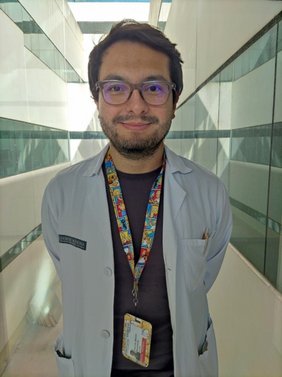Gd-EOB MRI for HCC Subtype Differentiation in a Western Population According to the 5th Edition of the WHO Classification
Auer, T.A., Halskov, S., Fehrenbach, U. et al. Gd-EOB MRI for HCC subtype differentiation in a western population according to the 5th edition of the World Health Organization classification.
Eur Radiol 33, 6902–6915 (2023). https://doi.org/10.1007/s00330-023-09669-y
Hepatocellular carcinoma (HCC) remains a global health concern and is a leading cause of cancer-related mortality. The recent 5th edition of the WHO Classification of Digestive System Tumors introduced a comprehensive subdivision of HCC subtypes [steatohepatitic (sh-ST), clear cell (cc-ST), macrotrabecular-massive (mt-ST), scirrhous (sc-ST), chromophobe (ch-ST), fibrolamellar (fb-ST) and not otherwise specified subtype (nos-ST)], reflecting the evolving understanding of tumor biology and prognosis. However, translating these subtypes into clinically relevant diagnostic and treatment strategies has been challenging due to the lack of widely accepted noninvasive diagnostic features.
Authors explored the utility of Gadoxetic acid (Gd-EOB)-enhanced MRI in differentiating HCC subtypes according to the abovementioned WHO Classification of Digestive System Tumors.
This single-center retrospective study involved analysis of clinical and histopathological parameters, along with Gd-EOB-enhanced MRI data, in western patients who underwent surgical resection for HCC.
The study successfully reproduced previously reported imaging features for extracellular contrast-enhanced MRI associated with common HCC subtypes, validating the utility of Gd-EOB-enhanced MRI in subtype differentiation. For example, intralesional steatosis in sh-ST [1] and macrovascular invasion and elevated alpha-fetoprotein (AFP) in mt-ST.
Fib-ST showed no specific imaging features. It also occurred more frequently in young females, similar which is described in previous literature.
A notable result was the prevalence of non-rim APHE and non-peripheral portal venous phase washout in the nos-ST. This combination, a hallmark in HCC imaging, was most commonly found in nos-ST, potentially reflecting histopathological differences. The chr-ST was distinctive in that only one lesion exhibited typical enhancement.
Another significant discovery was the presence of predominantly iso- to hyperintense lesions in the hepatobiliary phase (HBP) only in specific subtypes, including nos-ST, cc-ST, and sh-ST, potentially linked to membrane transporter expression changes during tumor dedifferentiation [2, 3].
Previously studies [4], suggested that high Gd-EOB uptake HCCs may have more favorable outcome. However, in this study, most lesions with high Gd-EOB uptake were of intermediate or poor differentiation, suggesting intra-tumor heterogeneity. This finding was reported for the first time in the context of the new WHO 5th edition HCC subtypes and may have potential implications for prognosis.
Furthermore, the study acknowledged its limitations, including the retrospective nature of the analysis and potential selection bias. The research primarily involved a surgical cohort of HCC patients, representing those with earlier stages of the disease. However, the study also included patients with intermediate and advanced HCC who underwent surgery, which introduced some degree of heterogeneity.
In conclusion, the study's results suggest that Gd-EOB-enhanced MRI holds promise for noninvasive differentiation of HCC subtypes, according to the recent WHO Classification. This potential could have implications in patients' prognosis and the development of personalized treatment strategies.
References:
- Inui S, Kondo H, Tanahashi Y et al (2021) Steatohepatitic hepatocellular carcinoma: imaging findings with clinicopathological correlation. Clin Radiol 76(2):160.e15-160.e25.
- Kitao A, Matsui O, Yoneda N et al (2011) The uptake transporter OATP8 expression decreases during multistep hepatocarcinogenesis: correlation with gadoxetic acid enhanced MR imaging. Eur Radiol 21(10):2056-66
- Haimerl M, Utpatel K, Gotz A et al (2021) Quantification of contrast agent uptake in the hepatobiliary phase helps to differentiate hepatocellular carcinoma grade. Sci Rep 11(1):22991
- Kim JY, Kim MJ, Kim KA, Jeong HT, Park YN (2012) Hyperintense HCC on hepatobiliary phase images of gadoxetic acid-enhanced MRI: correlation with clinical and pathological features. Eur J Radiol 81(12):3877–3882
Carlos Manuel Baracaldo Silva is a fourth-year radiology resident at Hospital Universitari I Politècnic La Fe in Valencia, Spain. He studied at Universidad de Los Andes Medical School in Bogotá, Colombia. His interests are still developing, but currently focused on Abdominal Radiology, especially in liver and pancreatic imaging. Additionally, he recently participated in a fatty-liver disease research and co-authored a paper about pancreatic steatosis and cardiovascular risk.

